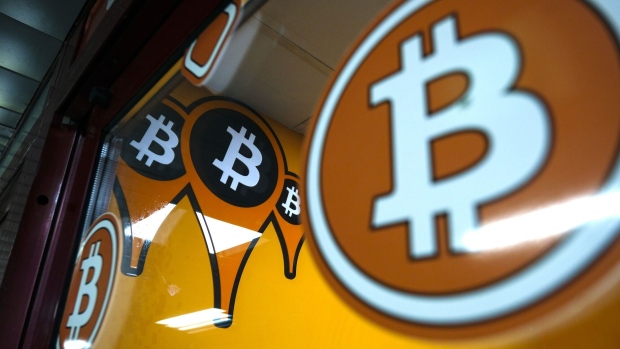Apr 18, 2024
Bitcoin Halving Seen Mostly Priced in by JPMorgan, Deutsche Bank
, Bloomberg News

(Bloomberg) -- With just a day or so to go, JPMorgan Chase & Co and Deutsche Bank AG say that the once-every-four-years Bitcoin software update called the “halving” that has long been touted as one of the keys to propping up the cryptocurrency’s value is pretty much priced in.
Rather than on the token’s price, the main implication would be on Bitcoin mining, JPMorgan analysts wrote in a note dated Thursday. As unprofitable miners exit the Bitcoin network, they expect the sector to consolidate, with publicly-traded firms the best positioned to gain market share.
“Publicly-listed Bitcoin miners are well positioned to take advantage of the new environment, mainly due to greater access to funding and in particular equity financing,” JPMorgan analysts wrote. “This helps them to scale their operations and invest into more efficient equipment.”
Similarly, Deutsche Bank analysts do not expect Bitcoin prices to increase significantly following the halving. Since the Bitcoin algorithm has already anticipated the halving, this event has already been factored in the market, the analysts said.
The event reduced the so-called mining reward, which is a fixed amount of Bitcoin released from the network to compensate miners for validating its transactions, by half every four years. The modification is likely became effective late Friday, according to data from crypto-mining analytics website mempool.space.
In the past, following a Bitcoin halving, the hashrate — a measure of the total mining capacity of the industry - generally falls as some miners are priced out of the market, ethe Deutsche Bank analysts wrote. “Participating in the process of guessing the hash and adding a block to the blockchain becomes less profitable as the reward to mining decreases.”
After Bitcoin’s first three halvings, the hashrate plummeted by 25%, 11%, and 25%, according to Deutsche Bank.
Despite not expecting drastic price fluctuations, Deutsche Bank still expects Bitcoin prices to remain high in the midst of expectations of spot Ethereum ETF approvals, central bank rate cuts and regulatory changes.
“Adding to that, a surge in layer-2 solutions and DeFi activity, which augment the network’s practical utility, and the setup begins to look remarkably favorable for the Bitcoin ecosystem and the wider crypto space,” they wrote.
Currently, the US accounts for 40% of Bitcoin mining. However, both JPMorgan and Deutsche Bank agree that it is likely that some Bitcoin mining firms would look to diversify into “low energy cost regions” such as Latin America or Africa post-halving to locate their inefficient mining supply and gain salvage values from those rigs which would otherwise sit idle.
--With assistance from Isabelle Lee.
©2024 Bloomberg L.P.





